by DJ Featherton
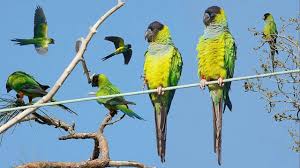
We moved to Florida in the 80’s and have loved every minute. Like so many other areas, Florida has many things that are unique just to Florida. Things like big bugs, anole lizards, Great Blue Herons looking through your screened door, alligators, and loud and obnoxious flocks of parrots! One day I was admiring the beautiful bottlebrush tree that grew just outside our dining room window. Suddenly, out of nowhere came an entire flock of big green Parrots that landed in my bottlebrush tree and in minutes snapped off and ate nearly every beautiful red bloom on the tree. I was in shock! Then, just like fighter jets and just as loud, these big green birds all zoomed off at high speed and disappeared. I’d never seen anything like it! It was exciting! I figured the bottlebrush blooms will soon come back, and so would the wild parrots. It’s was all fine with me. Ahh Florida!
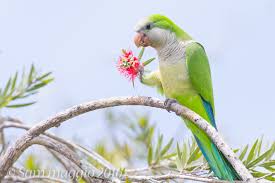
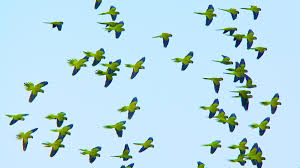
The price we seem to pay for our semi-tropical weather and beautiful environment is an invasion of non-native life that stems from imported pets to trees and plants brought in from other countries. Some of these exotics have gotten out of control like the kudzu plant and the Burmese python. Those big green parrots that nearly annihilated my bottlebrush tree were Monk Parakeets that came from South America via the pet trade. Over the last 40 years their numbers in the wild have grown to well over 100,000 and they are showing up in northern cities like New York and Chicago.
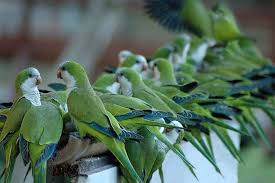
Monk Parakeets are sometimes known as Quaker Parrots. As it turns out, parakeets are simply small parrots. Monks are very intelligent, social, loud, ravenous and prolific. And then, they can live up to 20 years! Could this lead to a population explosion? So far, except for their colony nesting, the Monk Parakeets don’t have an adverse effect on the sensitive Florida environment. Their nests, however, can be a problem. They can be huge! This is the only bird in the parrot family that builds giant nests of sticks and grasses to accommodate many colony nesting pairs. These nests are frequently on power poles and can be the size of an automobile. Ultimately, the weight causes the nest to fall and break the electric lines. This is an expensive problem for the power company, and an imposition to the community. These huge nests will also fall from trees, breaking branches in the process. Oh well, they’re not the only bird that makes big nests on light poles and towers in Florida.
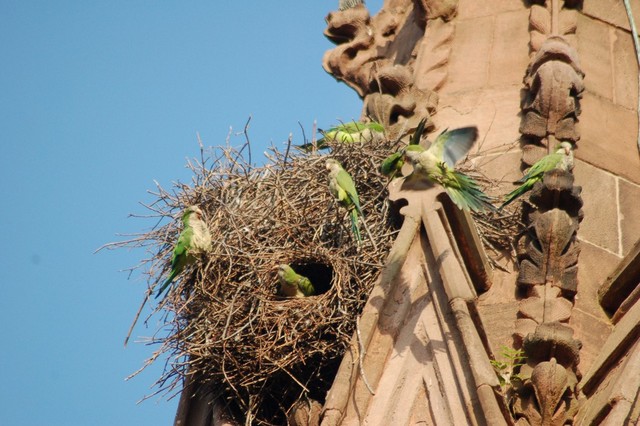

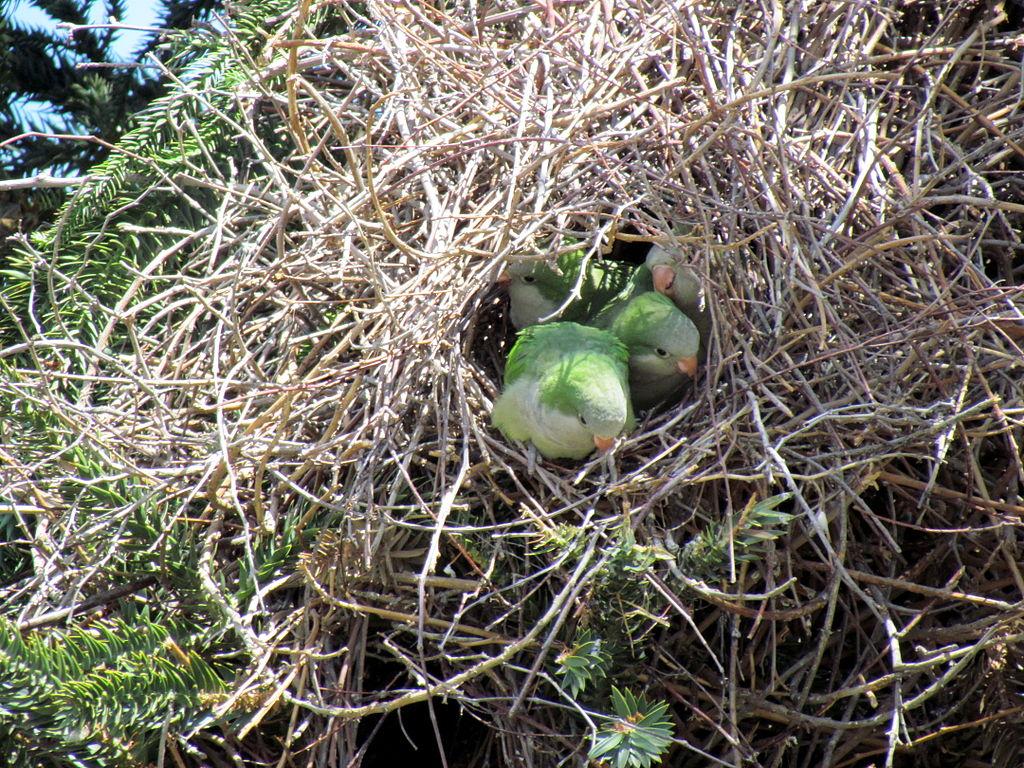
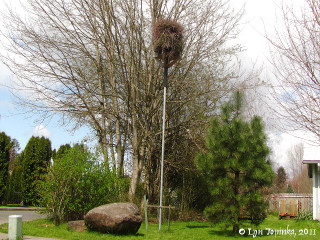
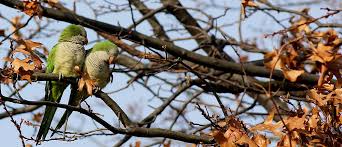
And, the Monk Parakeet is not the only prolific parakeet in this state. The Black Hooded Parakeet, also named Nanday Conures, is growing in numbers. Like the Monk, the Nanday Parakeets are social, active and loud, and can live for over 20 years. Both birds do well in urban settings with parks and green space, and are a visual treat at your backyard feeders. The Nandays are mostly green with shimmery aqua “scarves” around their necks, orange feathers on their legs and under their tails, and black hoods that extend over their eyes. They are 14″ long and have a 24″ wingspan. There are usually 25 to 30 in a flock, and you can hear them coming! Unlike the Monks, the Nandays colonize in tree cavities and have broods of three to four multiple times a year. This will add up! Nandays are becoming common in most parts of Florida, and are now being seen in parts of Louisiana, Texas and Arizona.
There are many more parakeets and other exotic birds from other parts of the world that are now finding home in Florida. The Monk and Nandays, however, have taken over as leading and permanent residents. Both birds were brought here and sold as pets. And, indeed, both birds are extremely smart and make excellent pets and companions. Obviously, many were turned loose or just got away. The only wild parakeets this country ever had was the Carolina Parakeet, and this bird became extinct in the early 19th century. Seems we are now getting replacements for the missing Carolina Parakeet. I know, some people don’t like flocks of noisy parakeets visiting their backyard, but most can’t deny the beauty and entertainment of the exotic Monk and Nanday Parakeets. What to do with the parakeets? Enjoy them.
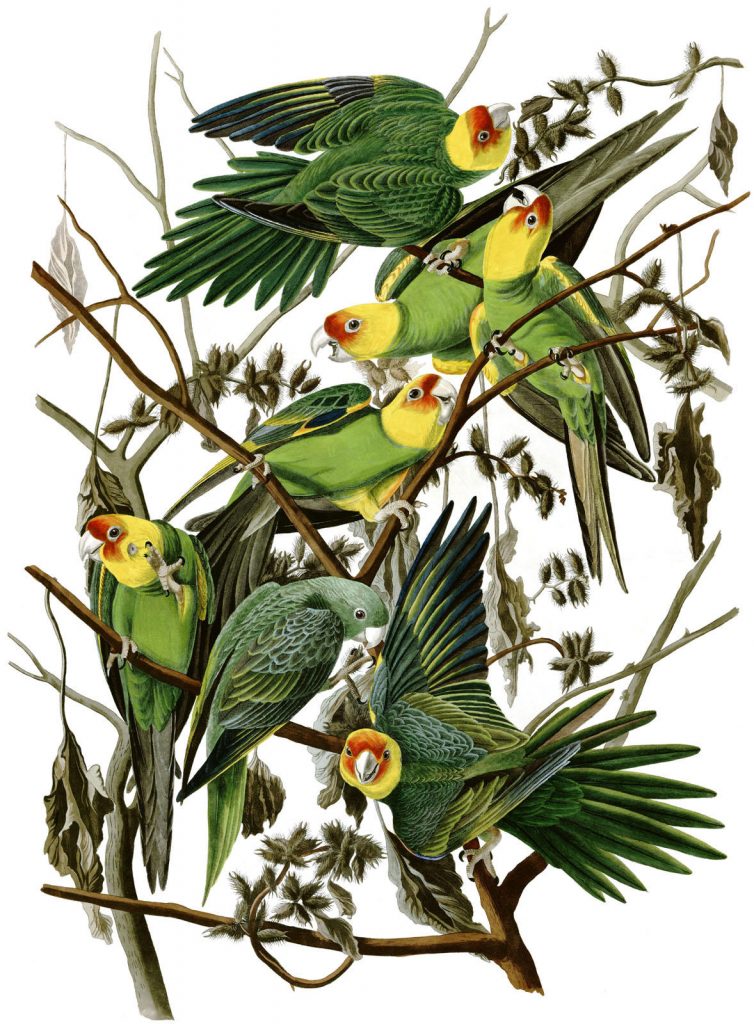
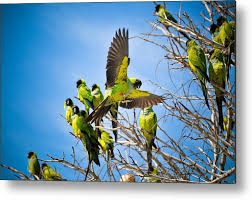
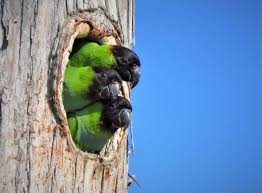
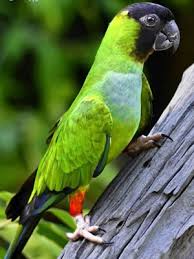
2 thoughts on “What to do with the Parakeets?”
This was a very informative article as iI learned something today. We have wild parakeets in NJ. Lifelong resident of 63 years and never knew this fact. Thank You
So glad you found this article informative! Birds are more than pretty feathers. They are a major barometer to the wellness and evolution of our environment. Thank you for your comment. DJ Featherton